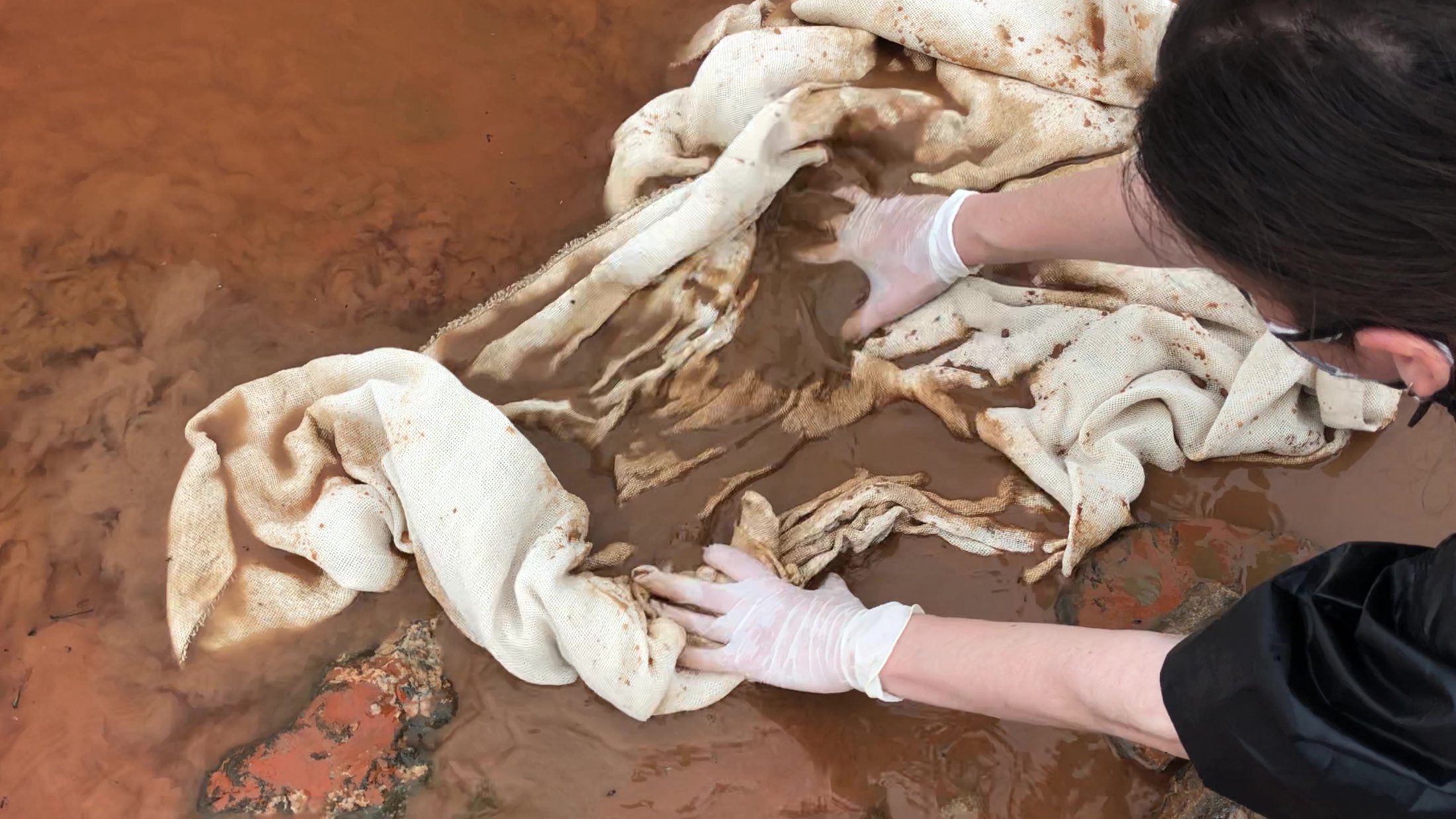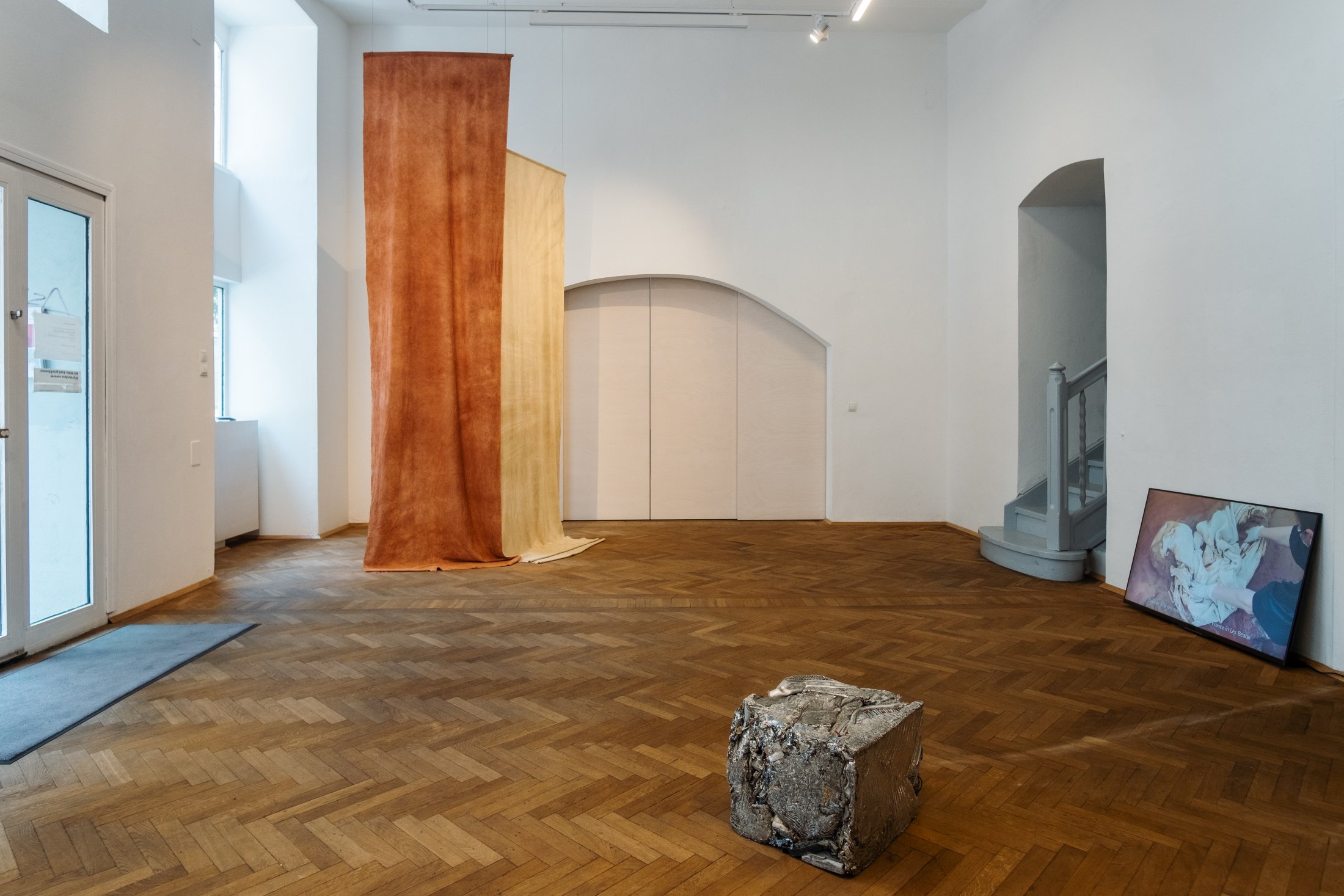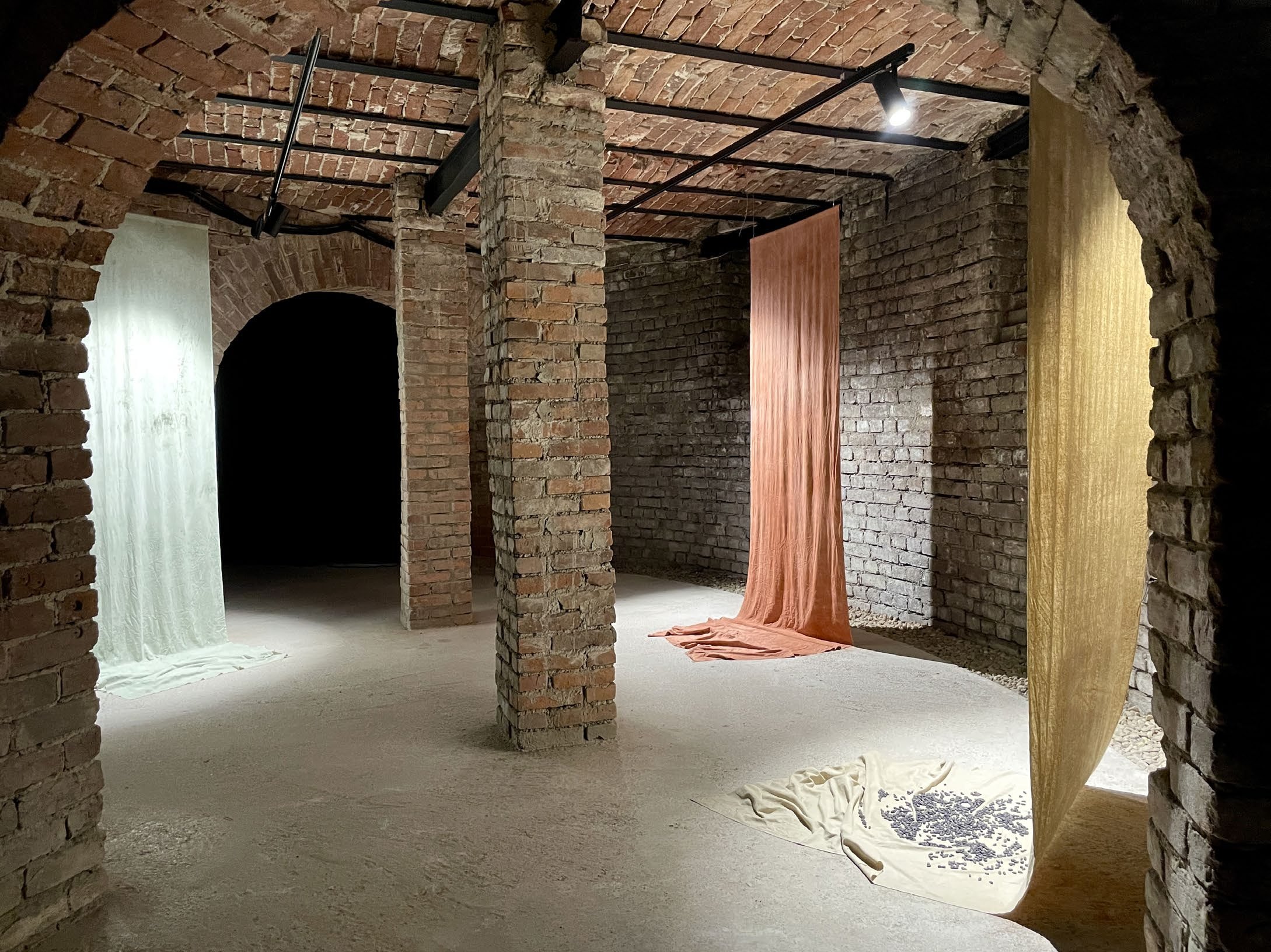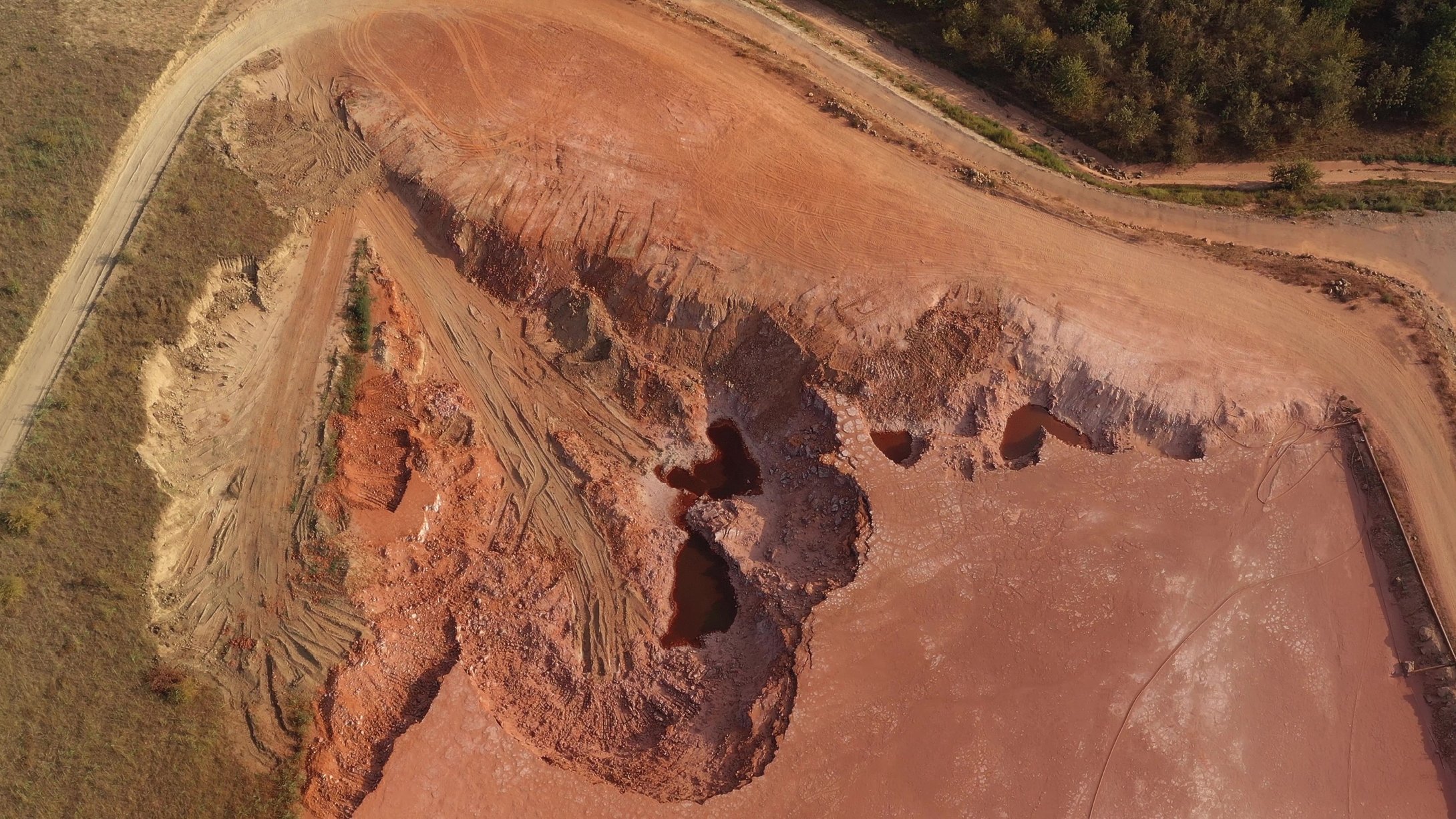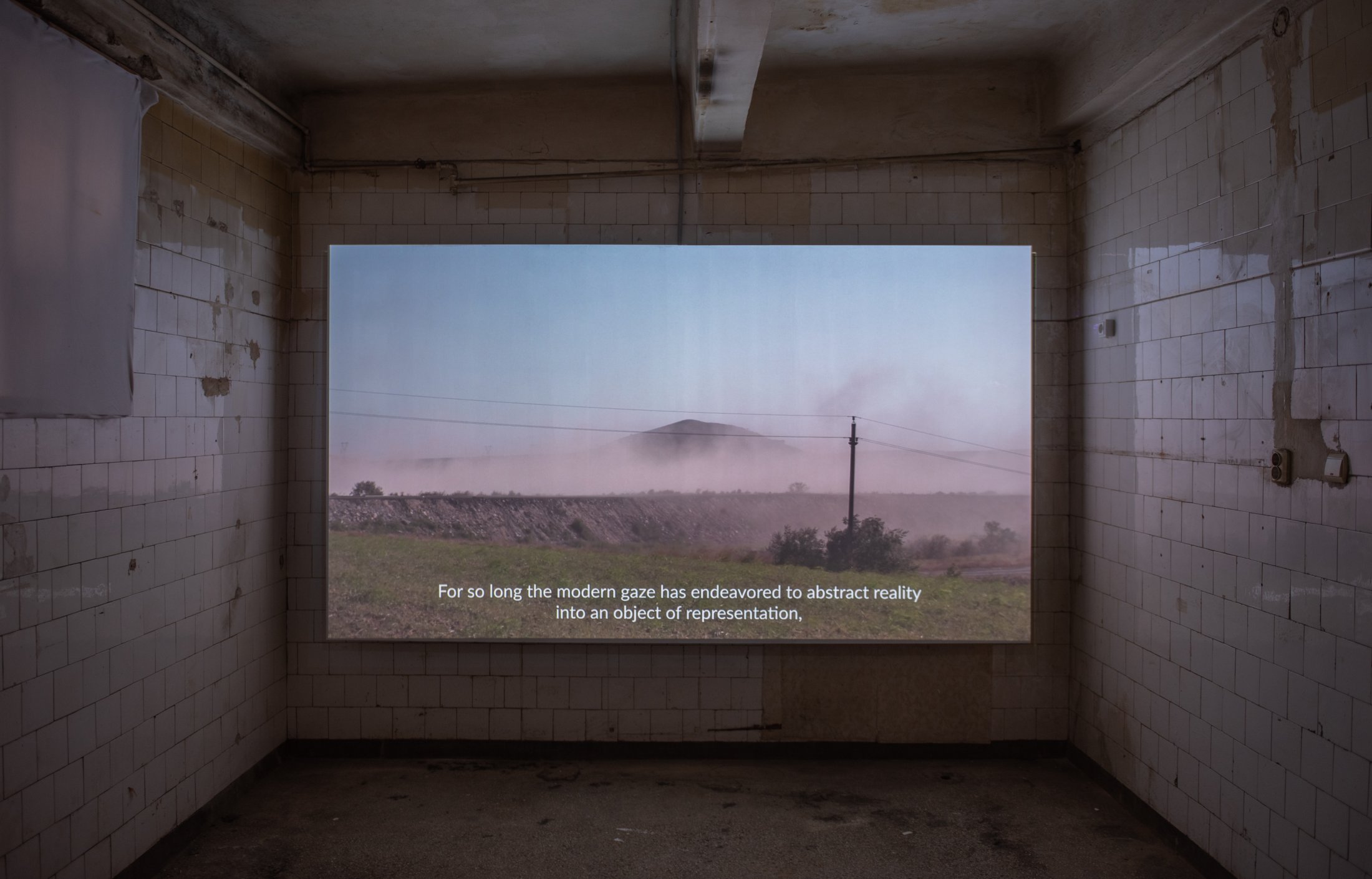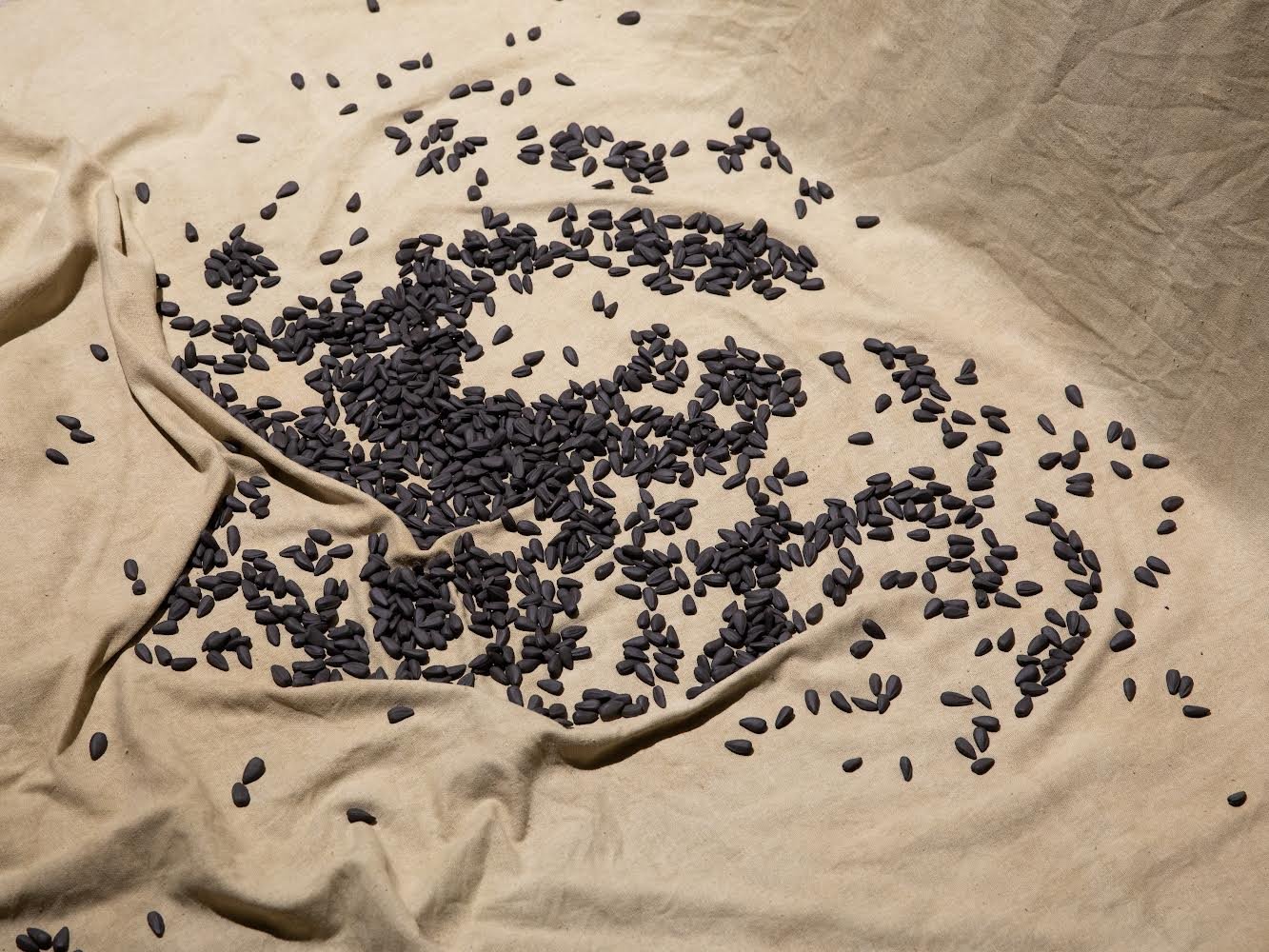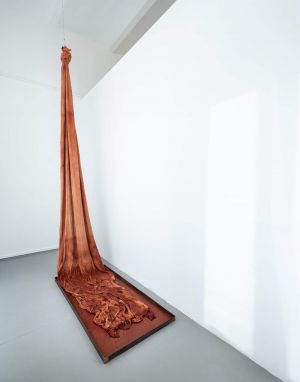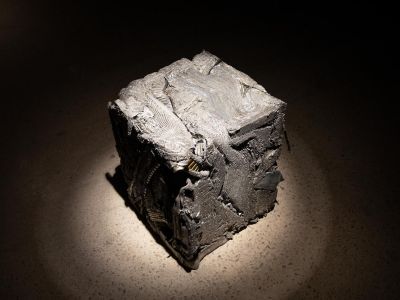Corporeal Red (video 09:55 min, textiles, recycled aluminum objects, ceramic sunflower seeds)
Corporeal Red is an artistic research project spanning over a period of about 3 years on the bauxite extraction and aluminum production industry, centered around the bauxite waste pond located near the waters of the Danube Delta in Romania. Known as the principal ore in the production of aluminum, bauxite is shipped to Romania from Sierra Leone. It is one of the most mined minerals in the world, particularly in territories rich in natural resources from the Global South, due to its extensive use in almost every sector of the economy, from military equipment, the construction of planes and automobiles, to food industry. The residues from its refining process constitute one of the most abundant industrial waste on the planet, widely known as sludge or red mud.
Through a video-essay, textiles and objects made of recycled aluminum and ceramic, Corporeal Red proposes a critical reading on the landscape of ruins and its reminiscent social ecologies, trying to situate them both in the regional context of East Europe and in the transnational context of an extractive capitalist system. By proposing to make visible not only the ruining, but also the precarity of a local geography, Corporeal Red addresses the history of geopolitical and economic hierarchies and the ways in which they influence the choice and the settlement of the areas of exploitation, production and decantation. In the swirl of this universalized logic of commodification, land becomes the main source of profit accumulation. And since it represents the essential infrastructure of life, its economic conditioning and deprivation of agency also extends to the human and nonhuman sociologies inhabiting it and with whom it lives in a relation of codependency.
Corporeal Red attempts at encompassing an understanding of land beyond the industrial framework referred to by the extractive context and to open up the discussion for agroecologies which, affected by the red mud, continue to develop in the proximity of these scenarios. What type of plants survive near a toxic waste pond? How do they respond to the contamination with alkaline chemicals? What about the land? How does the entrails of the local soil respond to the refining waste of a mineral belonging to another continent? And most importantly, how do they fight back? The project was shown in different evolving stages in different venues as part of The Current Affair of Some Young Romanian Artists, 2021, Cazul 101 and Ivan Gallery, Bucharest, Ecologies of Repair, 2022, GAEP, Bucharest, Chronic Desire/ Sete Cronică, Timisoara, 2023, and Impermanent, 2023, IG Bildende Kunst, Vienna.


